Some 6,500 light-years away, an epic race is coming to an end.
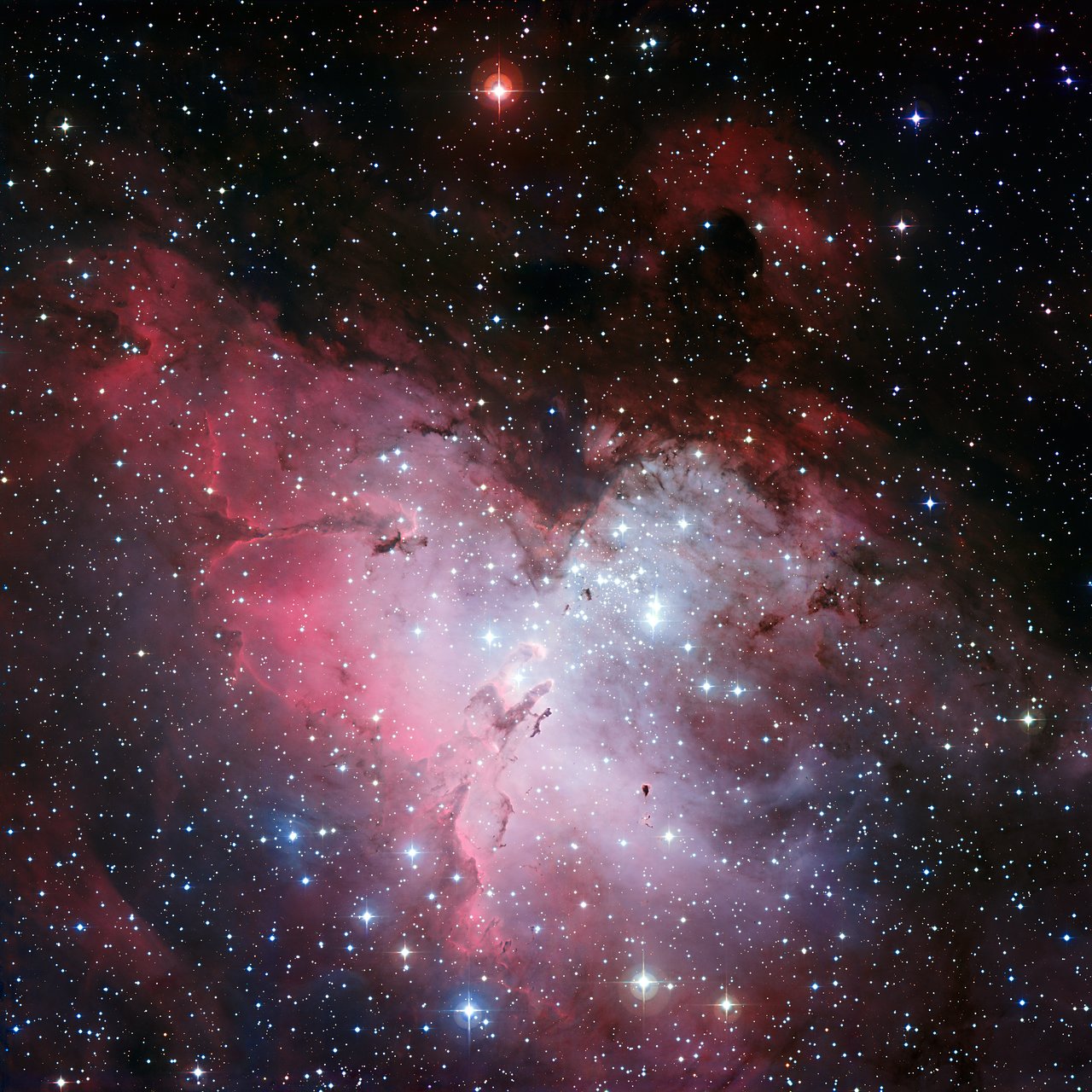
This wide-field image of the Eagle Nebula, taken from the ground, shows the star-forming region in all its glory, with new stars, the blue glow of reflected starlight, and the red glow of the ionization. Dusty elements blocking the light are also clearly visible. The reddish glow at the gaseous periphery is the result of the recombination of hydrogen atoms and a precisely 656.3 nanometer photon emitted each time an electron passes from the energy state n=3 to the energy state n=2.
Inside the Eagle Nebula, the last reserves of neutral gas are now threatened with evaporation.
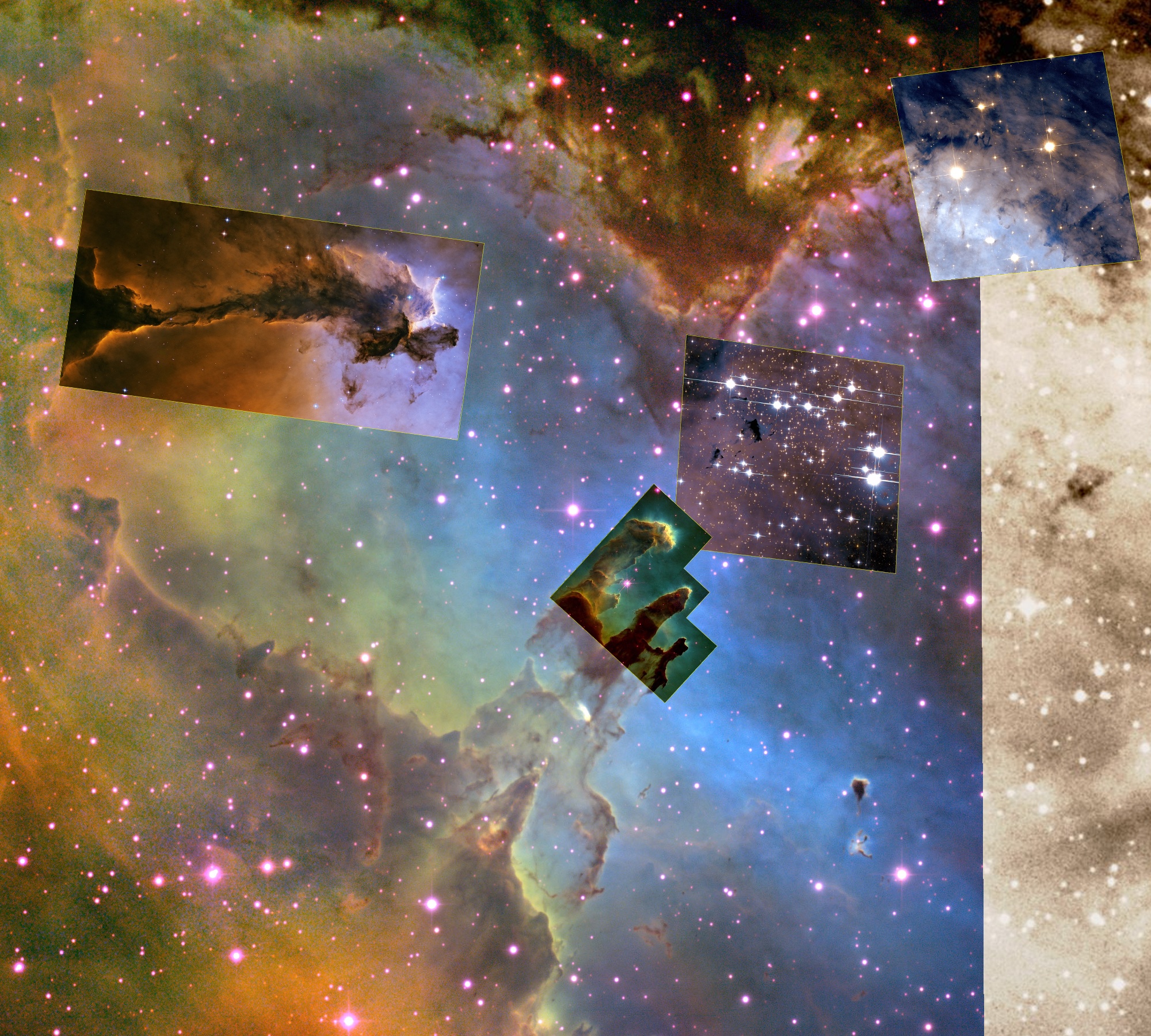
A large section of the Eagle Nebula, with four of the Hubble Space Telescope’s iconic images superimposed on the affected region of the larger nebula. Although these features, highlighted by the central pillars of creation, are incredibly interesting due to the neutral matter still present, most of the nebula is actually just a cavernous void littered with isolated stars and star clusters.
Located in the plane of the Milky Way, new stars form when cold gas collapses.
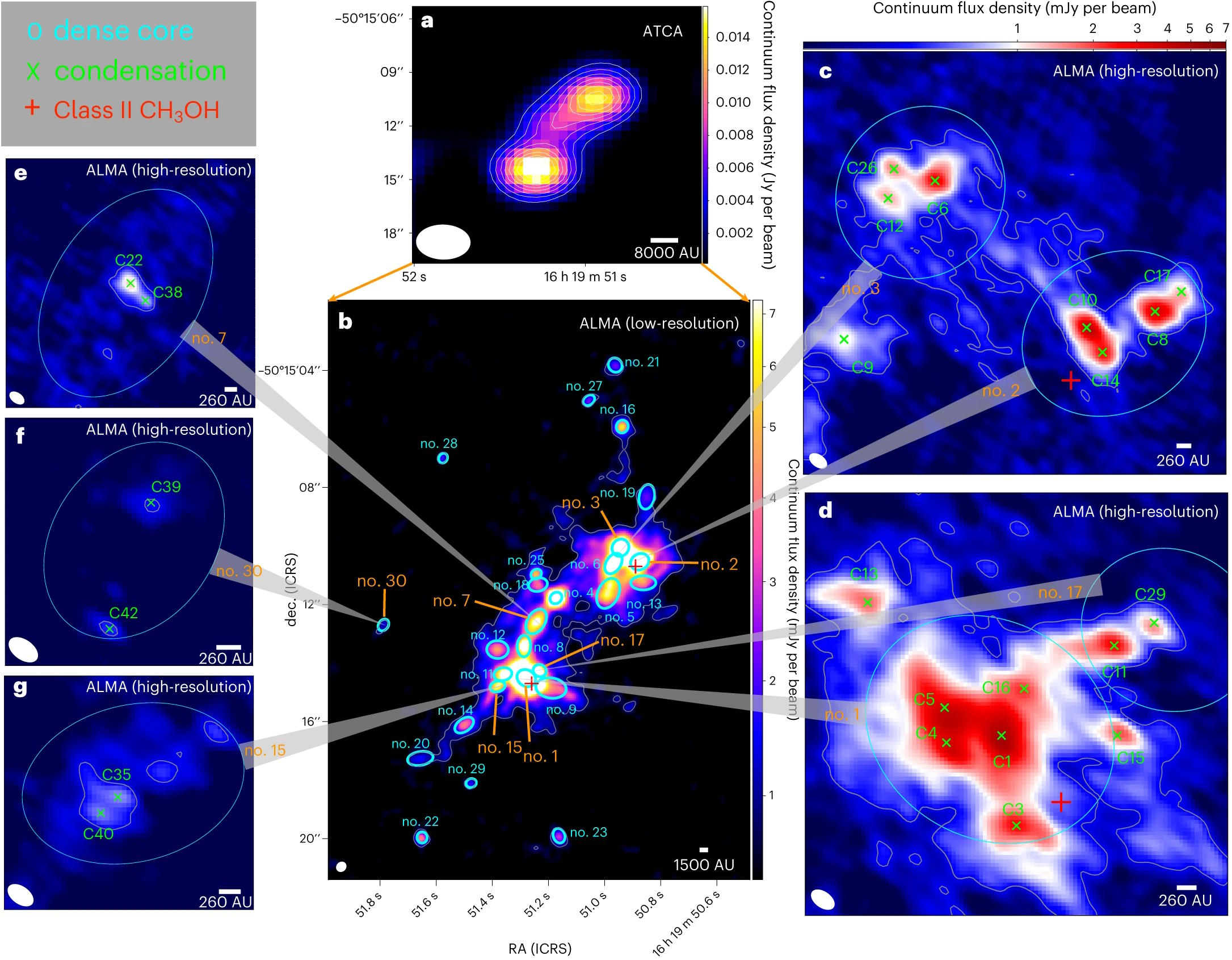
The dense cores of the protostar cluster G333.23–0.06, identified by ALMA, show strong evidence for high levels of multiplicity within these cores. Binary cores are common, and groups of multiple binaries, forming quaternary systems, are also quite common. Triplet and quintuplet systems are also found within them, while for these high-mass clusters, singlet stars are quite rare. Stars forming in nebulae throughout the Universe, including the Eagle Nebula, are expected to have similar clustering properties.
This collapse leads to fragmentation and ultimately the formation of new star systems.
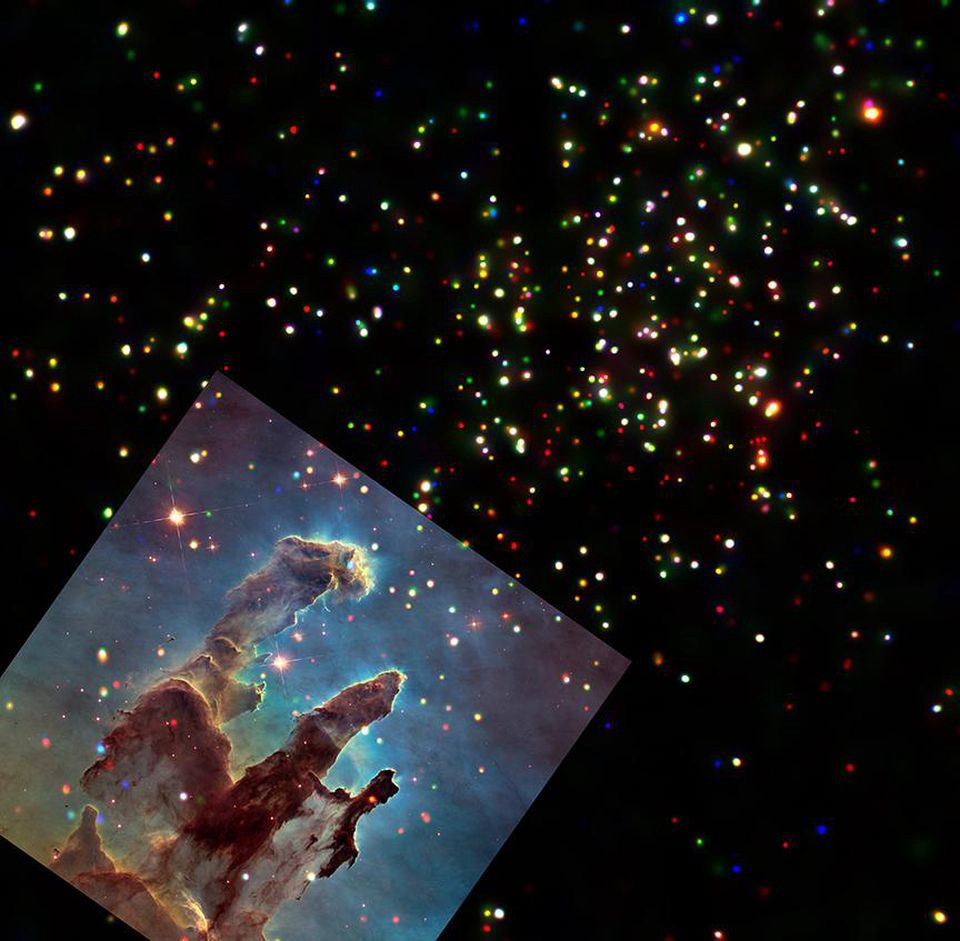
Chandra’s unique ability to distinguish and locate X-ray sources has identified hundreds of very young stars and those still forming (called “protostars”). Infrared observations from NASA’s Spitzer Space Telescope and the European Southern Observatory indicate that 219 of the Eagle Nebula’s X-ray sources are young stars surrounded by disks of dust and gas, and 964 are young stars without such disks: in total, more than 1,000 new stars and protostars have been discovered. And no, there is no evidence of recent supernovae or supernova remnants discovered; the pillars are not being destroyed.
However, young stars are hot and violent: they emit enormous amounts of ultraviolet radiation.
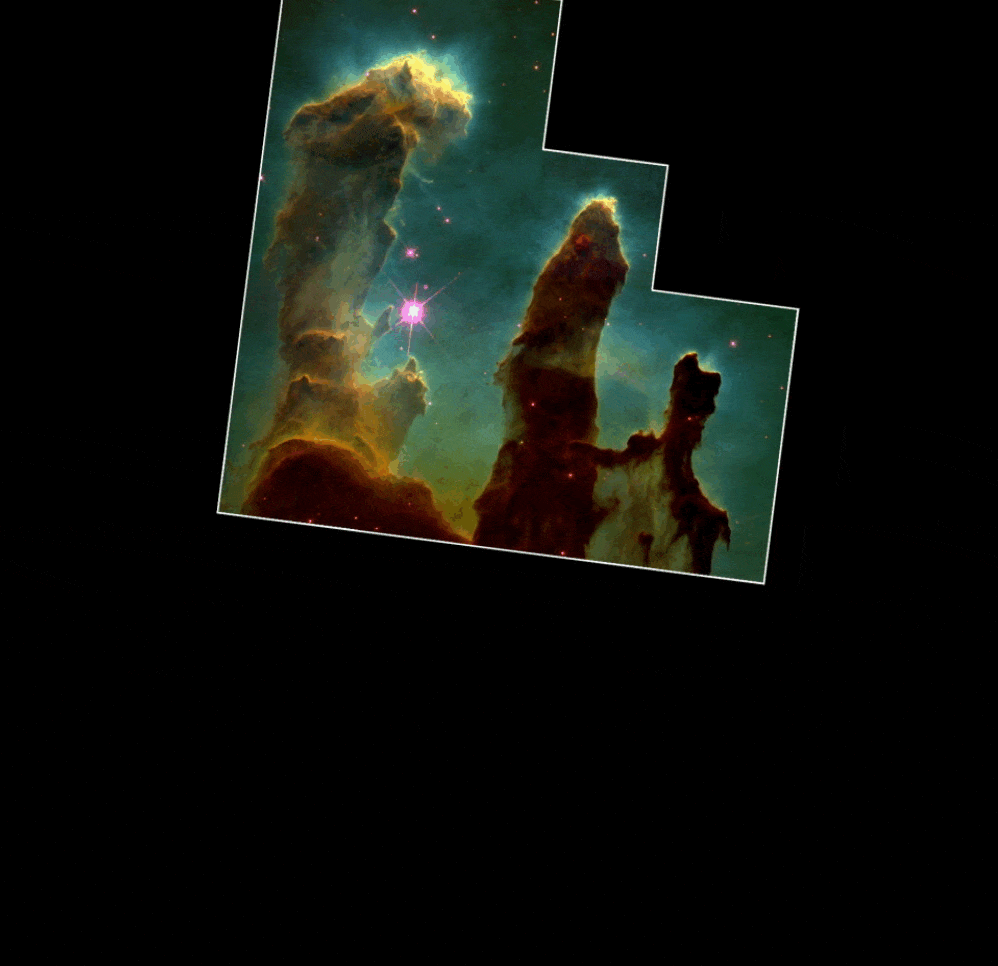
Over the past 27 years, our view of the Pillars of Creation has not only expanded in size and resolution, but also in terms of wavelength coverage. The longer wavelengths of light, revealed with unprecedented resolution by JWST, allow us to see features that could never be exposed by an optical telescope, even if it were in space, alone . We can also say, although the effect is subtle, that the Pillars are slowly evaporating and after about 100,000 years they will be completely gone.
These photons ionize atoms, transforming them into plasma and boiling them.
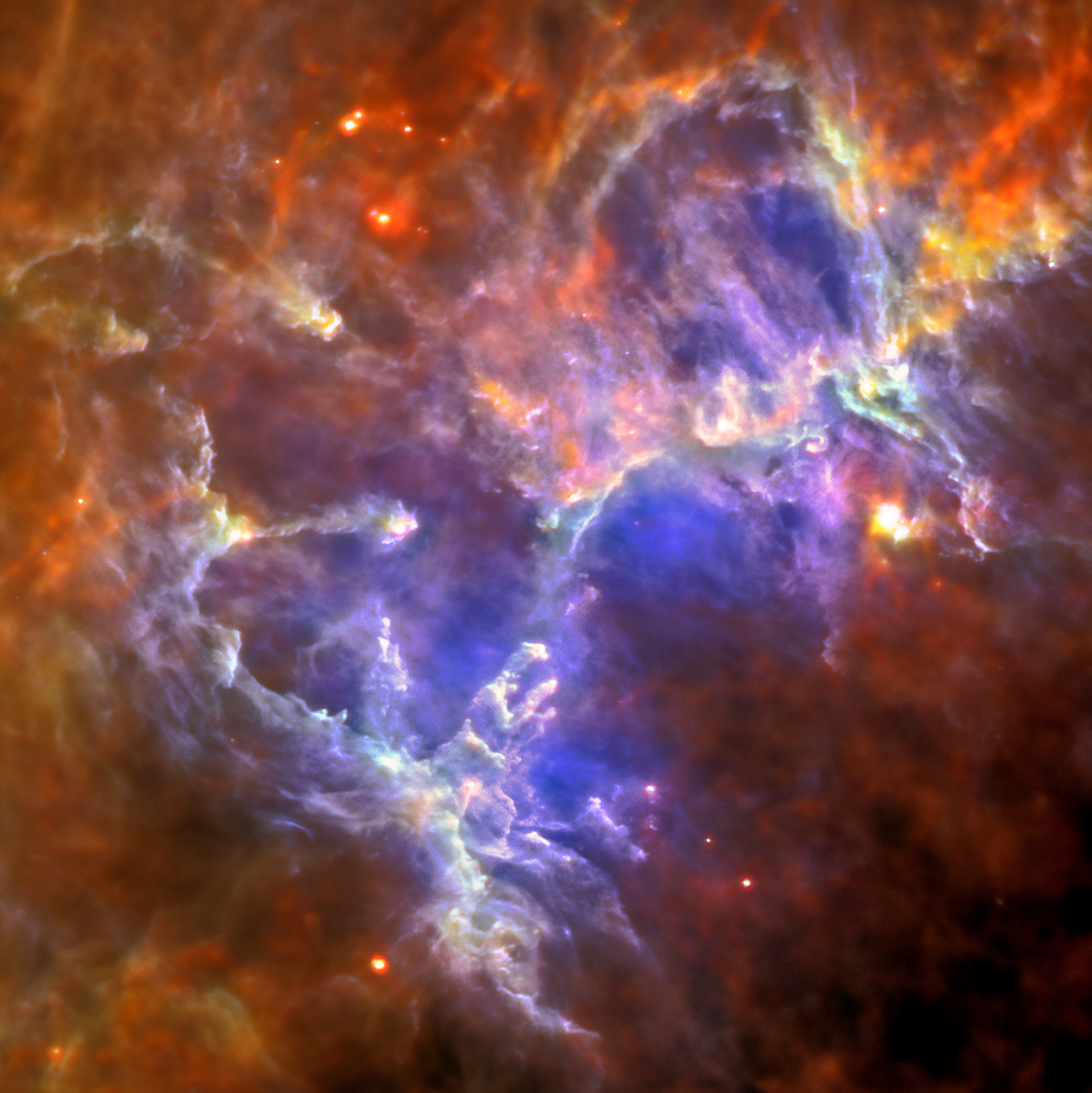
This image of the Eagle Nebula taken by Herschel shows the heat emission from the gas and dust of this extremely cold nebula, as only far-infrared views can capture. Each color shows a different temperature of the dust, from about 10 degrees above absolute zero (10 Kelvin or minus 442 degrees Fahrenheit) for red, to about 40 Kelvin, or minus 388 degrees Fahrenheit, for blue . The Pillars of Creation, identifiable just below and to the left of center, are among the hottest parts of the nebula, as revealed by these wavelengths.
Once a large cloud of gas, most of the Eagle Nebula is now cavernous.
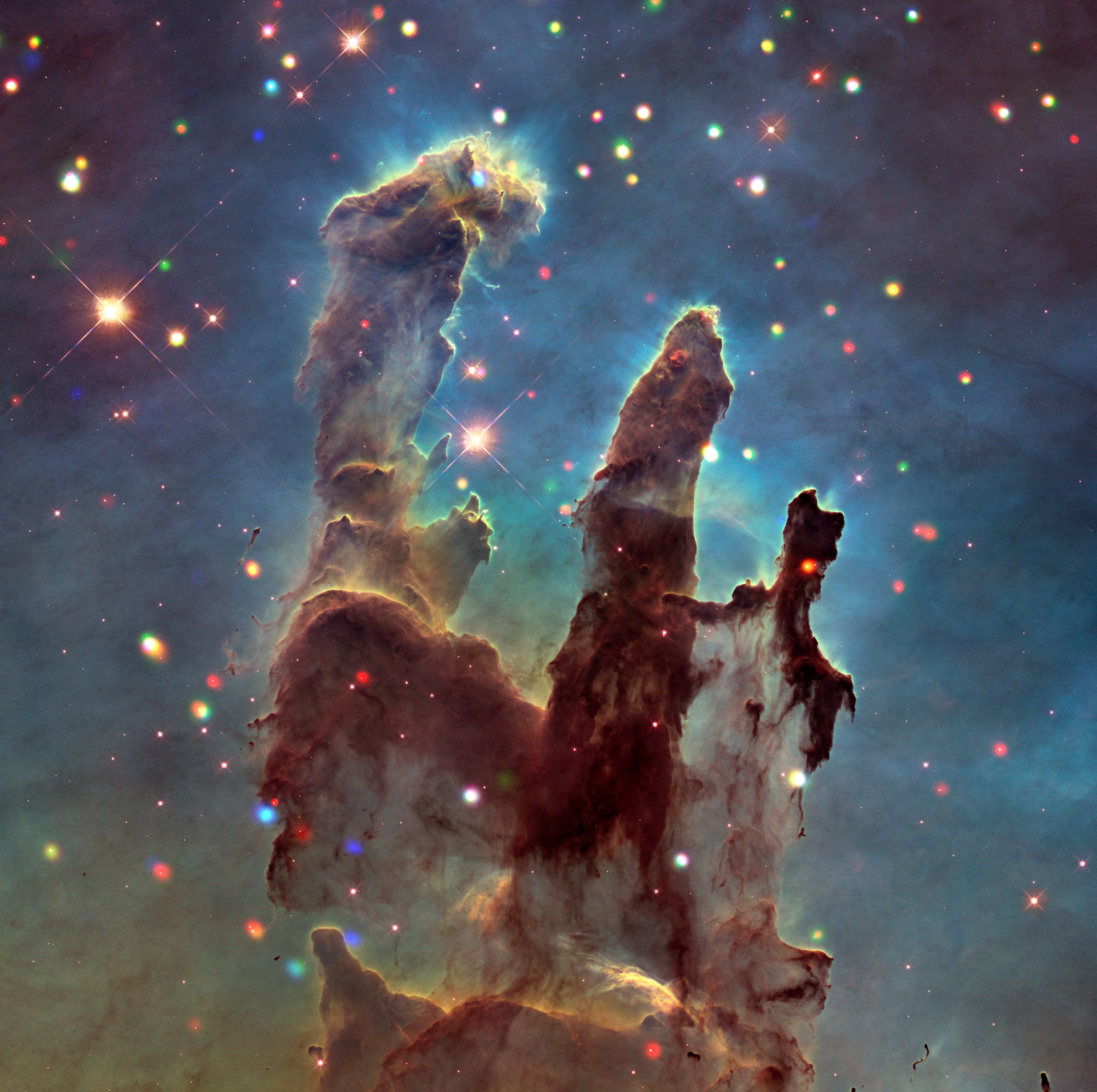
Using Chandra, researchers have detected more than 1,700 X-ray sources in the Eagle Nebula field. Two-thirds of these sources are likely young stars within the nebula, and some of them are visible in this small field of view around the Pillars of Creation. Although most of the sources do not originate within the pillars themselves, the “eye” of the largest pillar corresponds to a protostar about 5 times the mass of the Sun. The pillars themselves represent some of the last reserves of gas within the nebula that have not yet been completely photoevaporated.
Massive, newborn star systems dominate the interior, leaving a few scattered patches of gas.
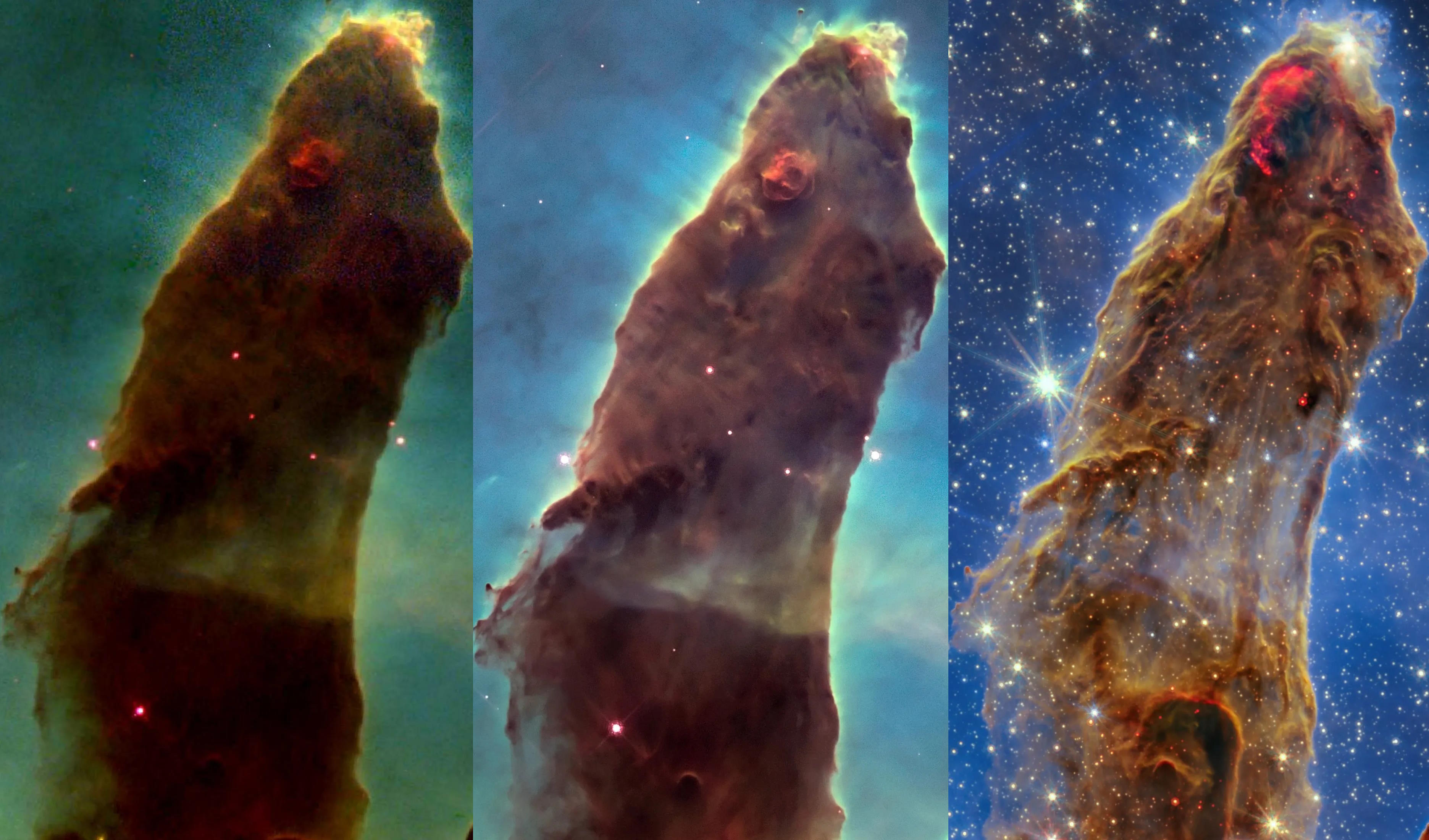
This three-panel view of the Pillars of Creation’s central pillar shows how our view of it has evolved from the 1995 Hubble image, to the 2014 Hubble image, to the 2022 JWST image. The level of detail seen in the pillar’s dust composition is particularly striking, as are the background stars revealed by JWST that are completely obscured by Hubble. The color differences between the first two panels and the third, near the top of the pillar, provide evidence of the energy transport within the pillar itself.
There are still three imposing columns, 4 to 5 light years high: the Pillars of Creation.
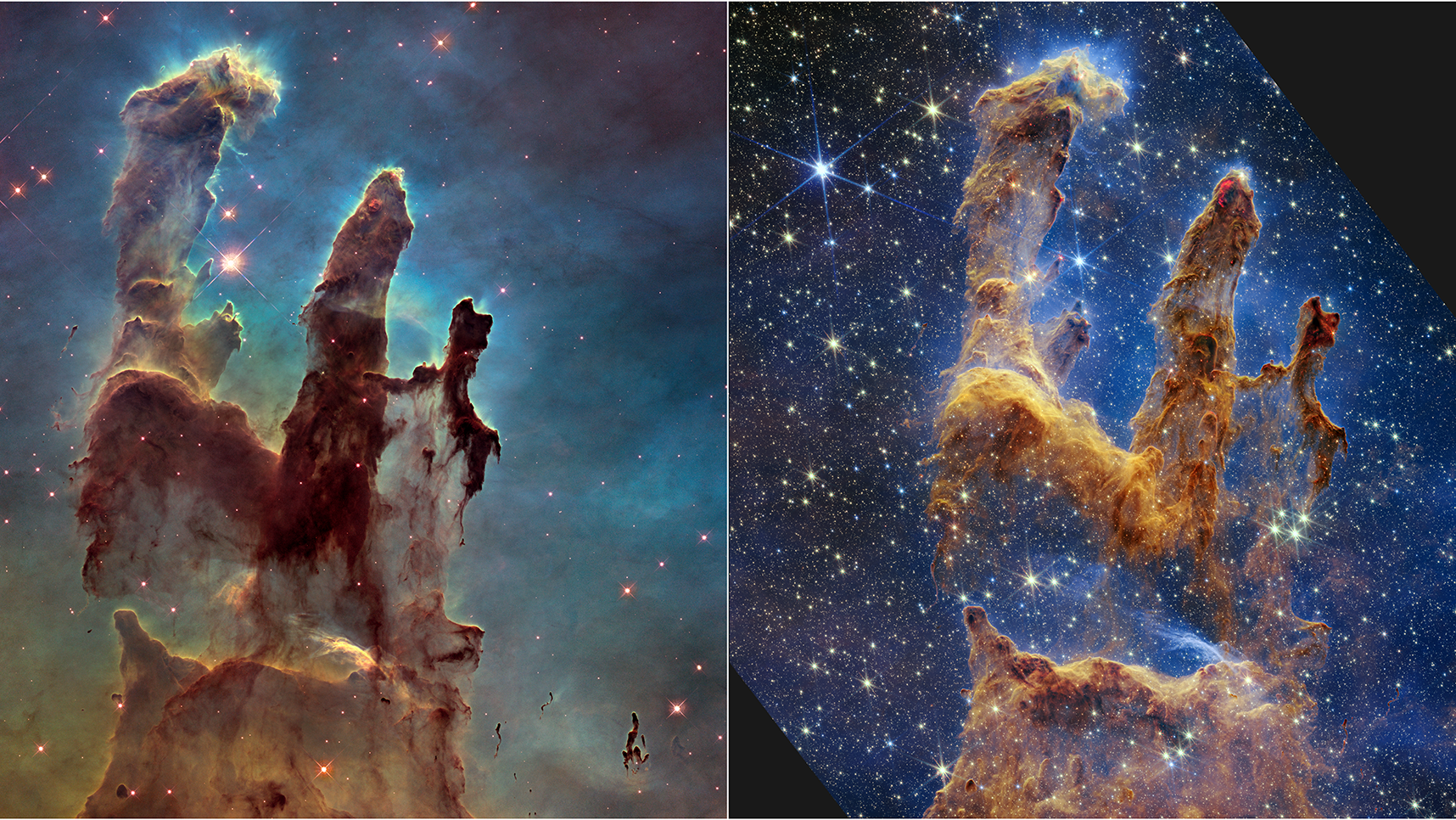
On the left is the iconic view of the Pillars of Creation as observed by Hubble. As of 2022, JWST (right) has also been able to observe the pillars, revealing details such as newly forming stars, faint proto-stars and cold gas that are invisible even to Hubble’s impressive capabilities.
Observations from 1995 to today show that the pillars are slowly shrinking: they are evaporating under the effect of external radiation.
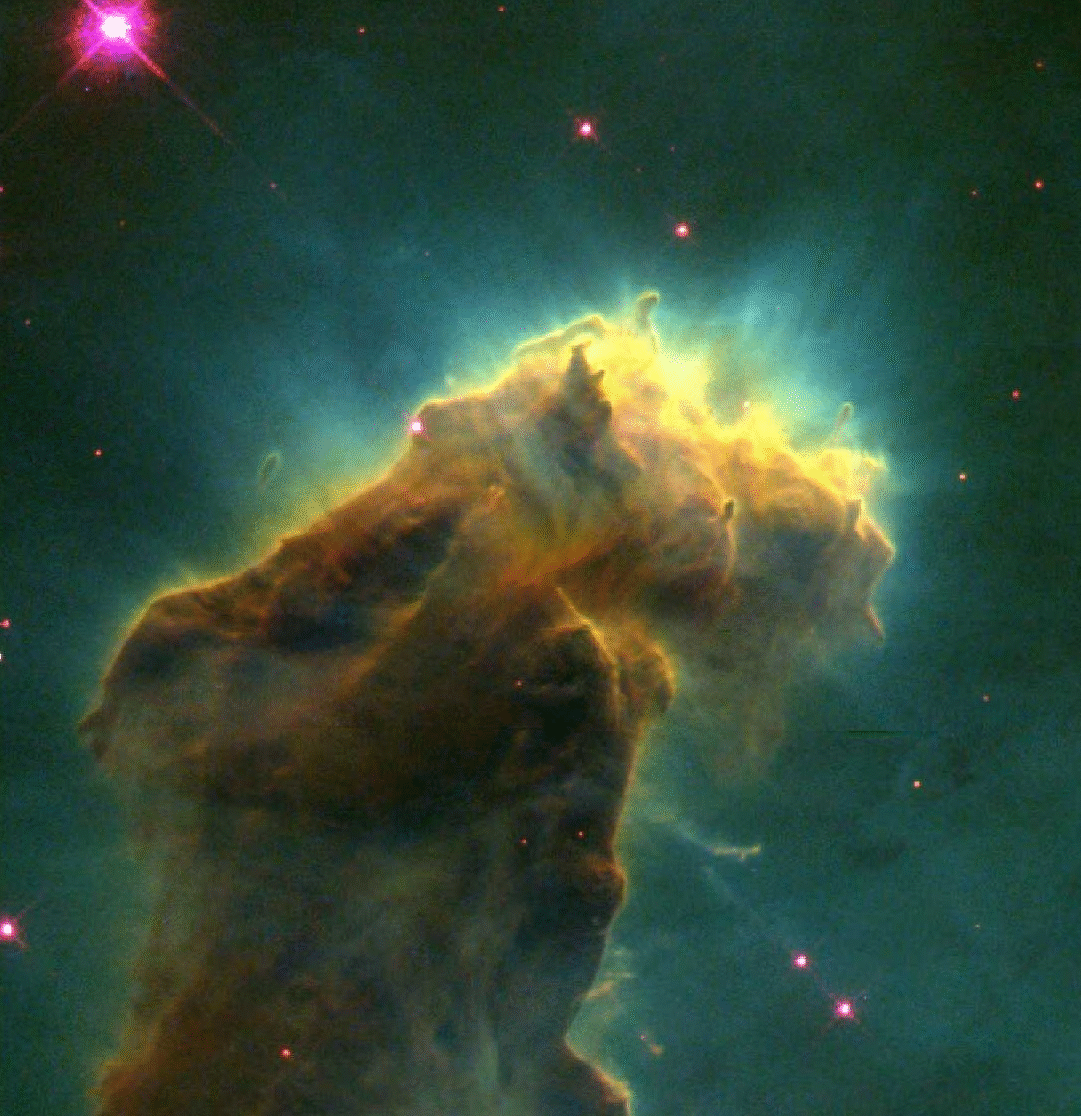
By rotating and stretching Hubble’s two iconic high-resolution images of the tip of the tallest pillar relative to each other, it is possible to superimpose the changes that occurred between 1995 and 2015. Contrary to many expectations, the evaporation process is slow and weak, indicating that the pillars will persist for about 100,000 years or more.
X-rays and infrared light reveal the presence of young stars forming inside.
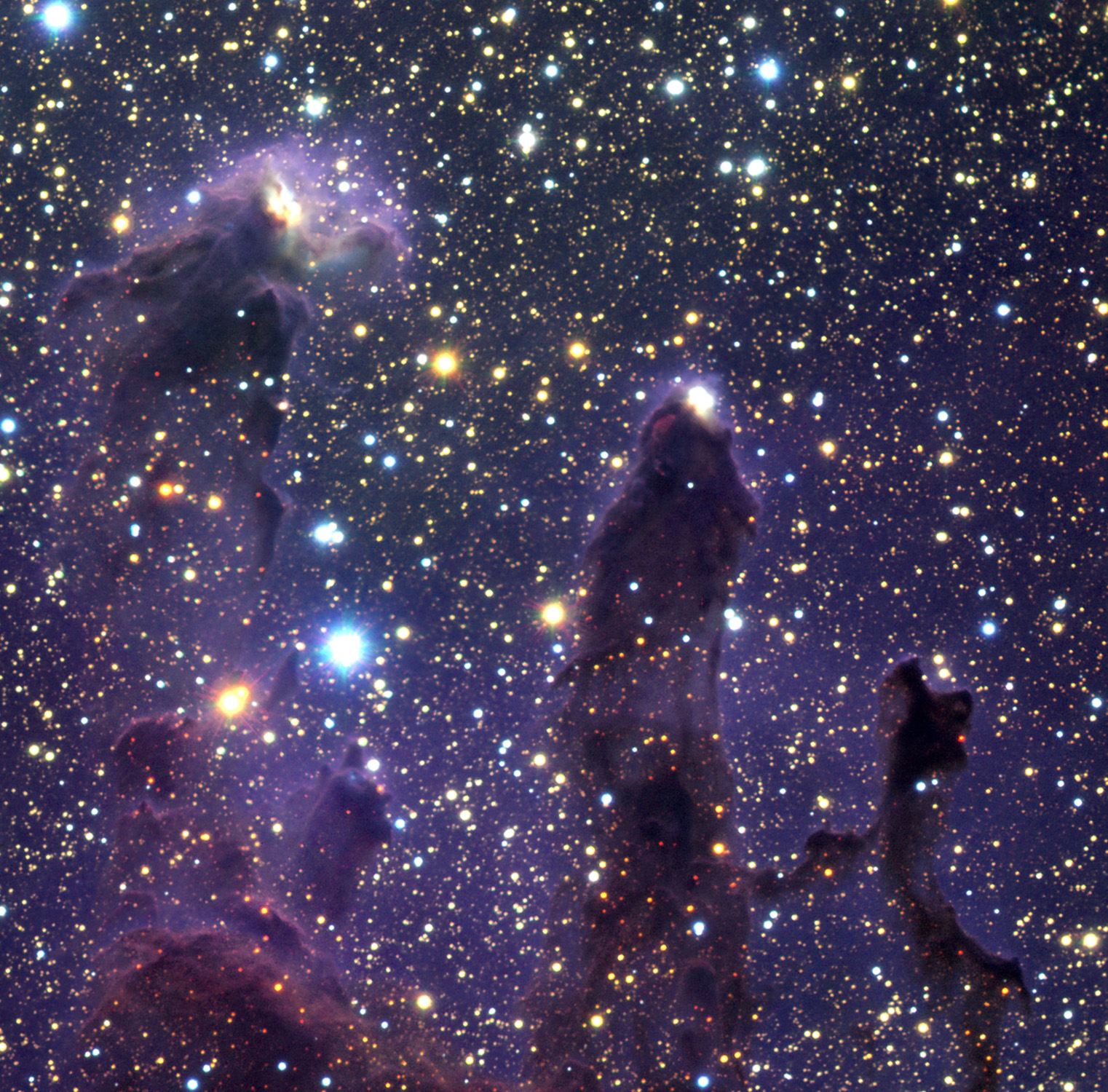
This infrared view of the Pillars of Creation taken by ESO’s Very Large Telescope, an 8.2 meter ground-based telescope, peers largely through the dust of the Pillars of Creation to reveal the stars forming there. interior. JWST’s views are in similar wavelengths, but have much higher resolution, much more detail, and cover a much larger wavelength range.
With no evidence of a recent supernova, these structures face a losing endgame.
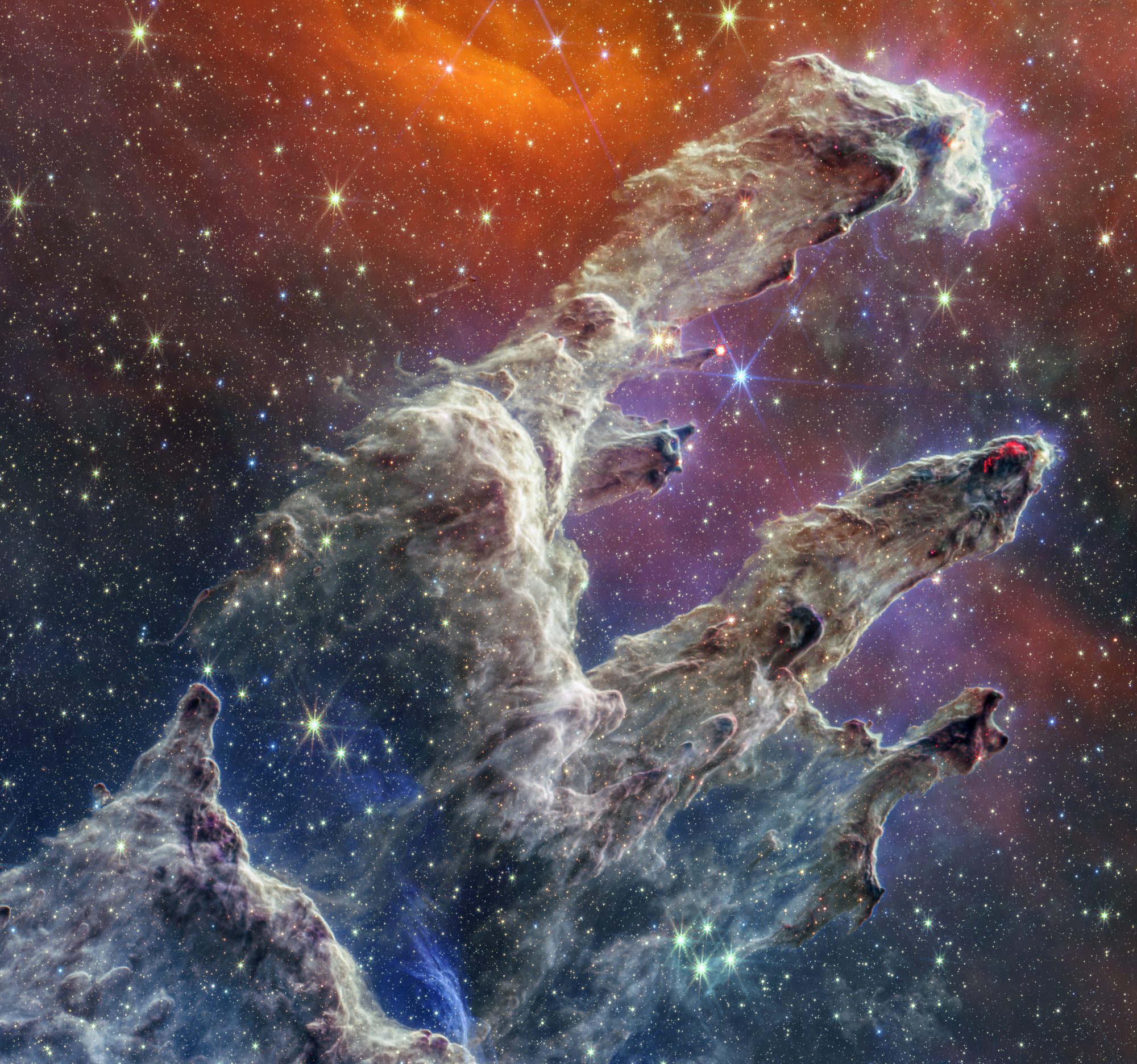
This colorful view of the Pillars of Creation exploits a wide range of JWST data, highlighting the tenuous and transient nature of these neutral gas features.
Internal and external radiation will boil away the last gas reserves after about 100,000 years.
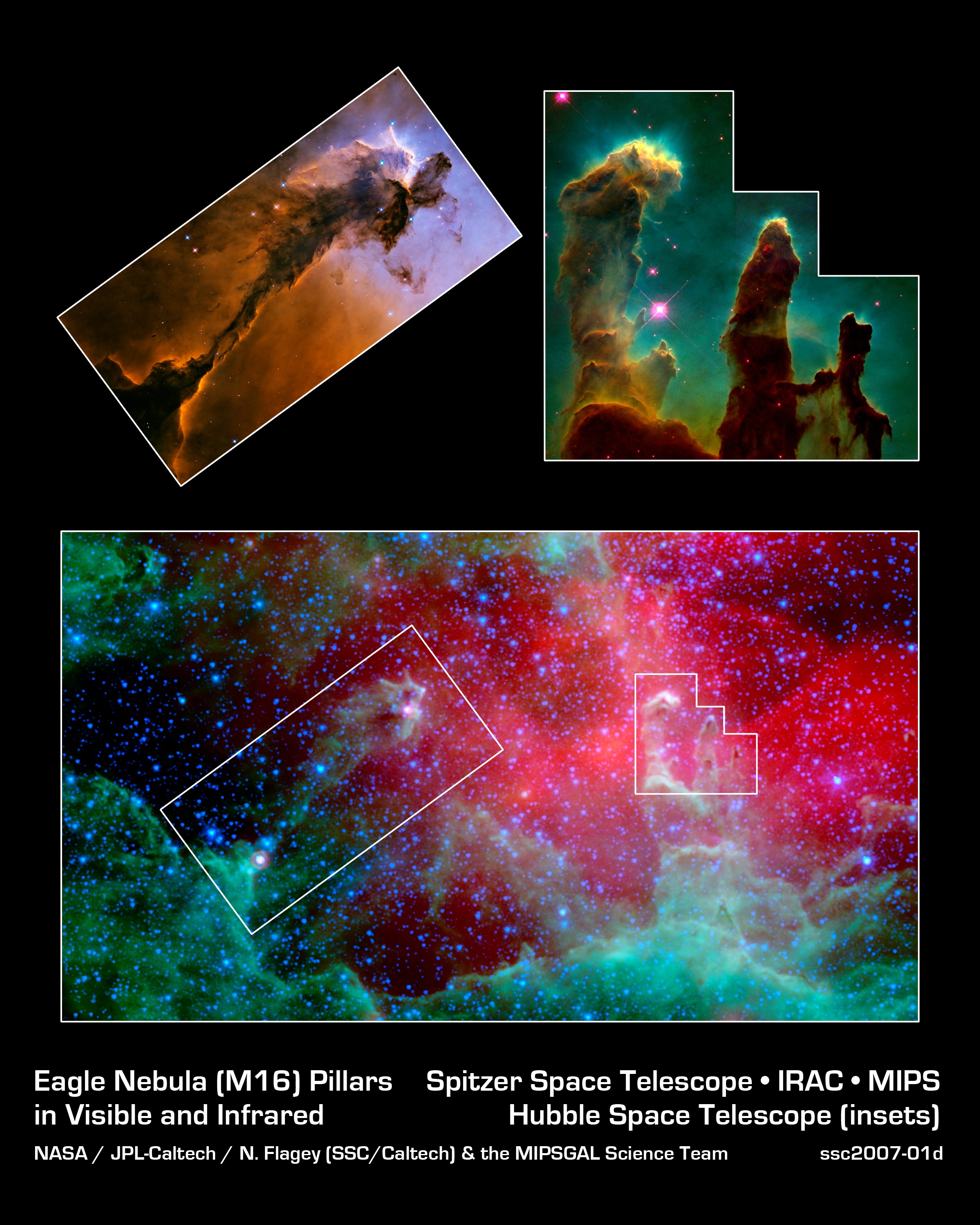
This composite infrared view of multiple channels from NASA’s Spitzer Space Telescope, taken in 2007, reveals the “Pillars of Creation” on the right and the “Spire” or “Fairy” on the left, similar to the iconic features revealed by Hubble in optical wavelengths. JWST has not yet imaged the Fairy, but its dense central core of gas may yet survive the neutral matter in the pillars.
The heaviest and most massive clusters will become stars in their own right.
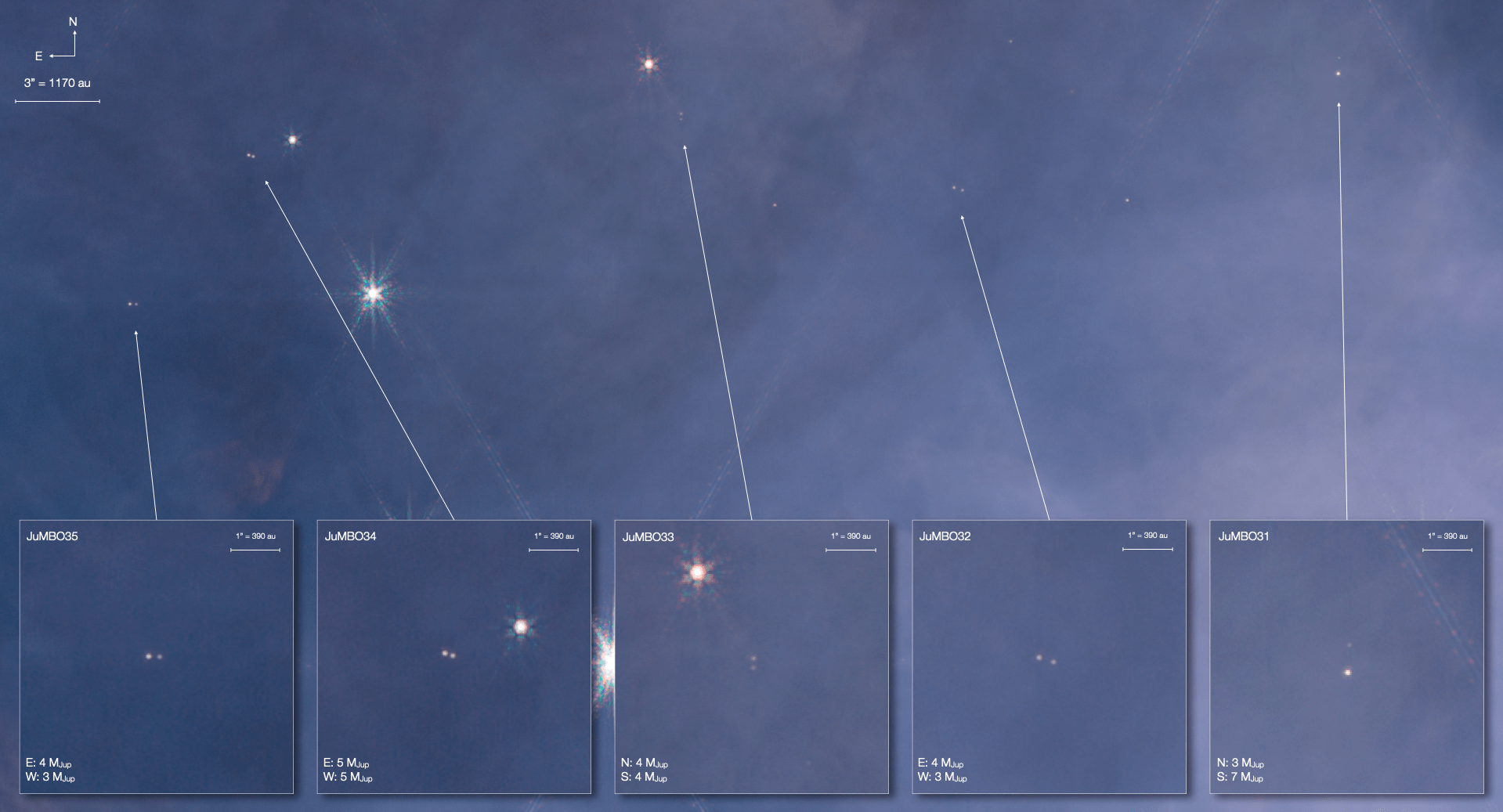
This small region of the Orion Nebula, taken with JWST’s NIRCam imager, features not only stars, gas and dust, but also planetary-mass objects, five of which are surprisingly found in binary pairs. These are known as JuMBOs (Jupiter-Mass Binary Objects) and make up about 9% of all planetary-mass objects found in the Orion Nebula. Although the Pillars of Creation are approximately five times further away, similar physics and objects should be present and in play.
“Failed stars” like brown dwarfs and Jupiter-like worlds also form in abundance.
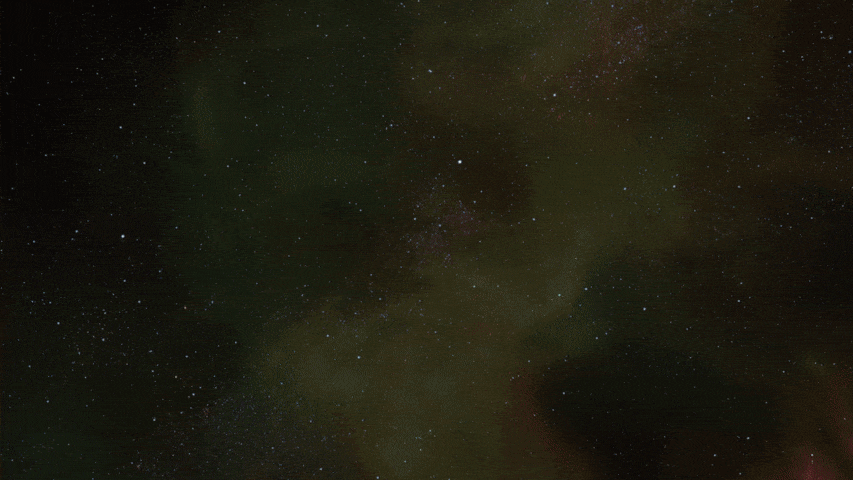
This 3D visualization of the location and properties of the feature that appears as the Pillars of Creation in the Eagle Nebula is actually composed of at least four different, disconnected components that lie on either side of a rich star cluster: NGC 6611. The neutral material absorbs and reflects starlight, giving it a unique appearance at optical wavelengths and spectacular views when viewed in infrared by JWST.
Only 5 to 10% of the initial gas becomes stars; the rest returns to interstellar space.
Mostly Mute Monday tells an astronomical story in images, visuals and 200 words maximum.